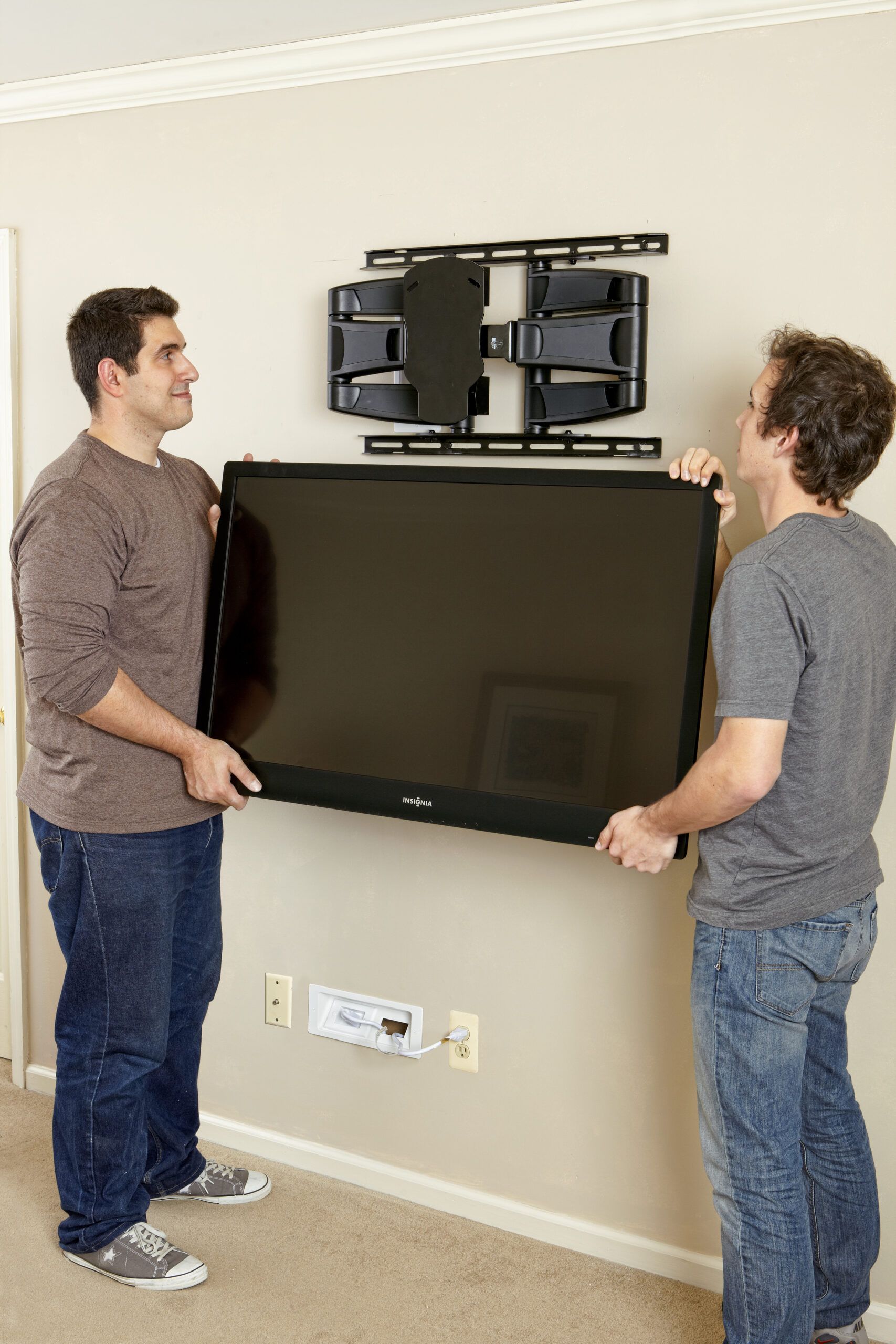Project details
Skill
Cost
Estimated Time
Hanging a flat-screen TV can feel daunting on your own, but with the help of a friend, this project can be finished pretty quickly. Our guide walks you through how to hang your flat-screen TV safely, including choosing the right mount and managing cables for a clean, professional finish. Be sure not to skip steps or suggestions so that your TV is mounted securely.
Types of TV Wall Mounts
There are a few types of TV wall mounts, each offering different features and benefits:
- Ceiling mounts: These are used when wall mounting isn’t possible or wanted.
- Fixed mounts: Fixed mounts hold the TV close to the wall and don’t allow for any movement. They’re ideal for rooms where you have a consistent viewing angle.
- Full-motion or articulating mounts: These offer the most flexibility, allowing you to tilt, swivel, and extend the TV from the wall. They’re perfect for rooms with multiple viewing areas.
- Low-profile mounts: A low-profile mount is designed to keep the TV as close to the wall as possible for a sleek look.
- Tilting mounts: Tilting mounts allow the TV to tilt vertically, usually up to 15 degrees. They’re great for reducing glare and adjusting the viewing angle slightly.
Choosing the Right Mount for Your TV
When selecting a mount, consider the following factors:
- TV size and weight: Ensure the mount is rated to support your TV’s size and weight.
- Room layout: Consider where you’ll be viewing the TV from and choose a mount that allows for the best viewing angle.
- VESA compatibility: Check that the mount’s VESA pattern matches your TV’s mounting holes.
- Wall type: Make sure the mount is suitable for your wall material (drywall, concrete, brick, etc.).
- Additional features: Some mounts offer cable management systems or built-in levels for easier installation.
Essential Tools for TV Mounting
Checking that you have the right tools before you start will make the installation process smoother.
Required Hanging Tools
To hang your flat-screen TV, you’ll need these tools:
- Drill with appropriate bits
- Level
- Pencil
- Screwdriver (Phillips and flathead)
- Socket wrench set
- Stud finder
- Tape measure
Necessary Mounting Hardware and Accessories
You’ll also need some other materials:
- Cable management system (optional)
- HDMI cables and other necessary A/V cables
- Lag bolts and washers (if not included in the kit)
- PowerBridge kit (if concealing power cord)
- TV wall mount kit
Step-by-Step TV Mounting Process
When choosing the best location to hang your TV, think about where your electrical outlets are in addition to viewing angles and glare. You’ll need at least one outlet within reach of your cables.
To get started, use a stud finder to locate the studs on the wall where you want your TV. Mark the center of each stud with a pencil. Verify stud locations by tapping a small nail into the wall or using a thin drill bit. Measure 16 inches from the first stud to confirm the location of adjacent studs.
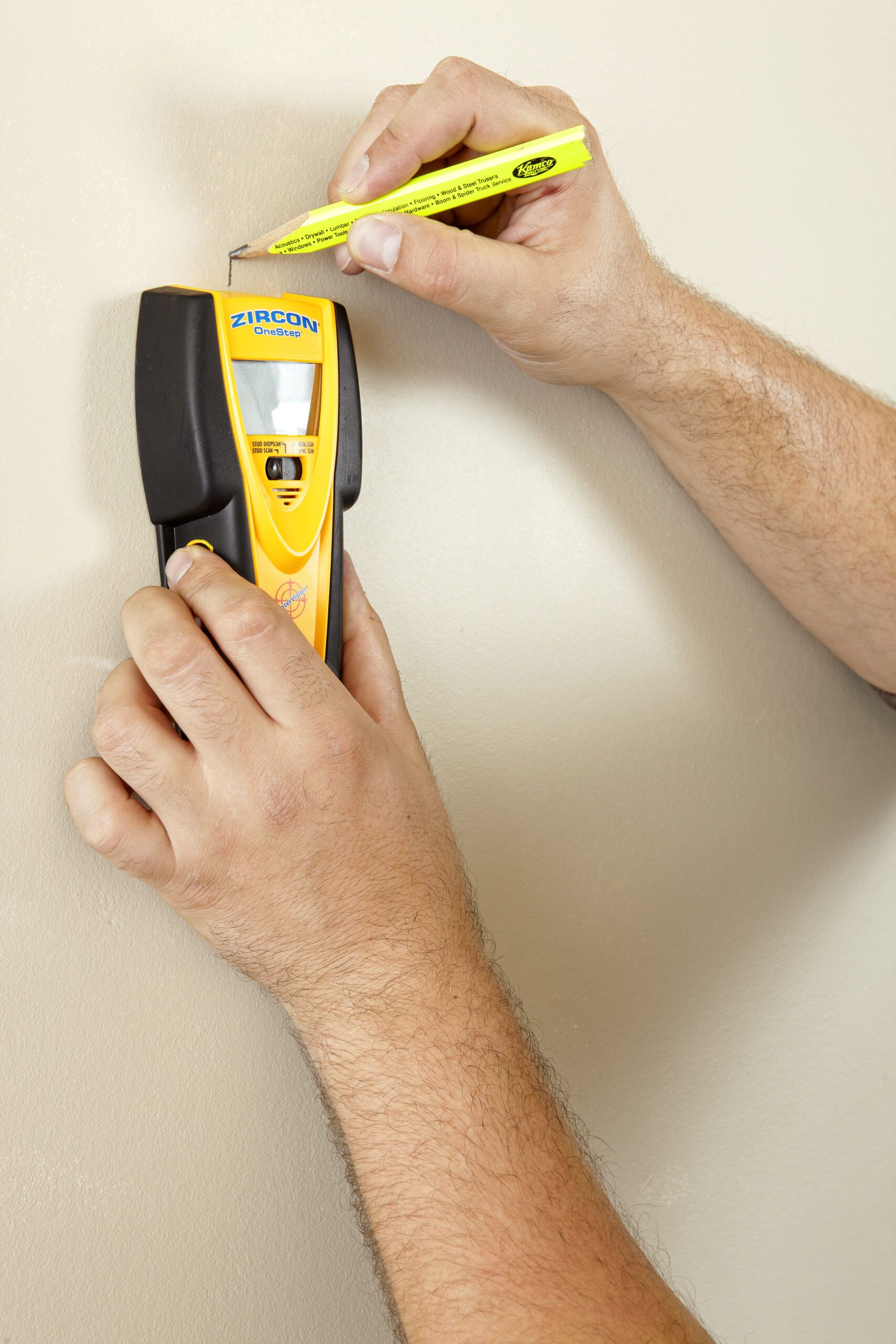
Next, drill pilot holes for the lag screws. Hold the mount up to the wall and position it over the holes. Install the lag bolts and washers with a socket wrench, but don’t tighten them completely. Slide the mount left or right depending on where you want the TV, check with a level, then tighten each screw.
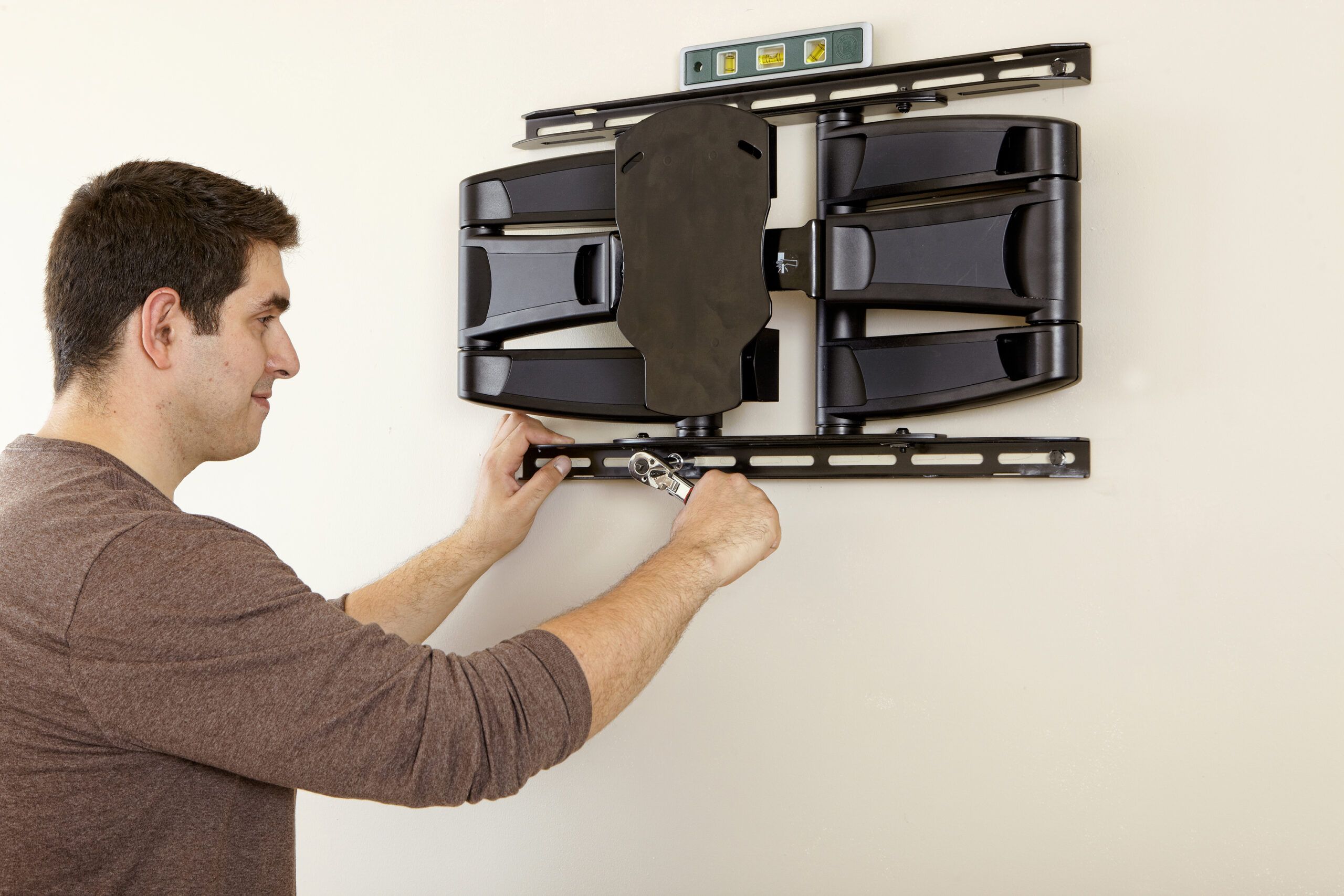
Determine the least visible spot for the PowerBridge’s upper receptacle box, then use a stud finder to make sure that you have a clear shot to the bottom of the stud bay. Place the receptacle template in this spot and trace around it. Use a drywall saw to cut out the wallboard along the template’s outline.
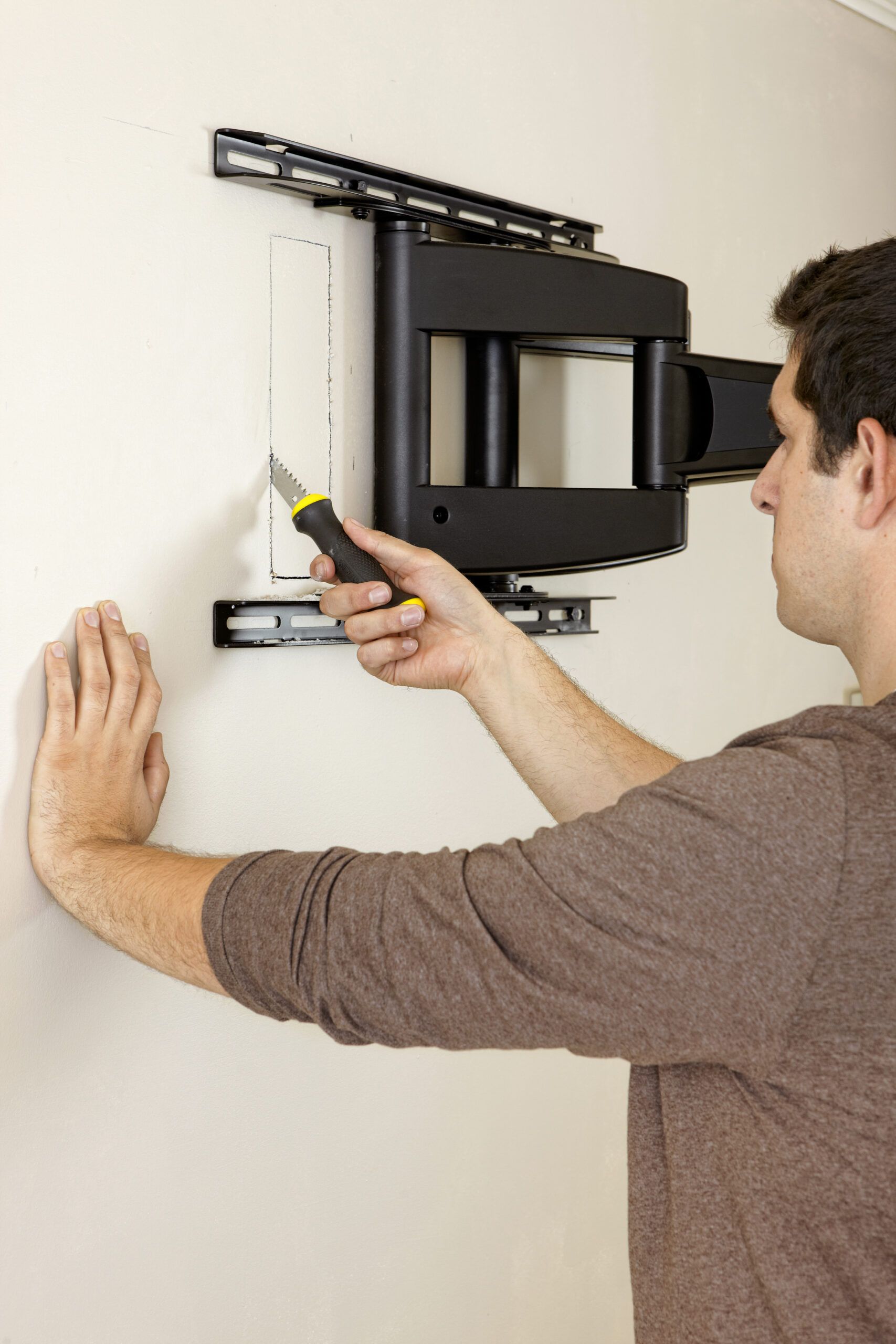
Now, locate the lower receptacle box within 6 feet of an outlet and repeat Step 3. Insert the upper box and snake the power cord down the wall. Use a screwdriver to twist the wall plate’s tabs, locking them behind the drywall. At the lower hole, plug the end of the power cord into the corresponding socket of the lower receptacle.
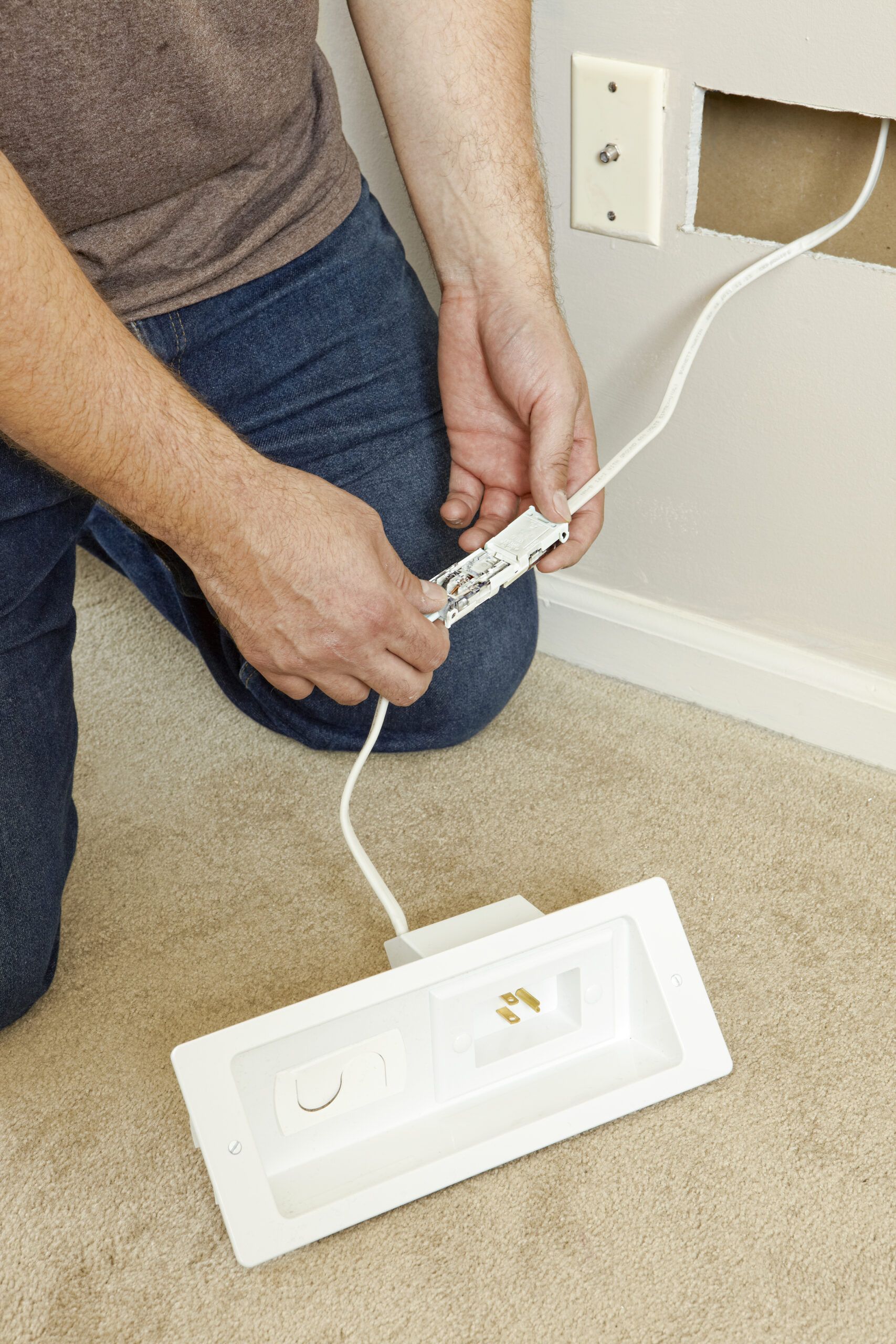
Back at the upper receptacle, fish the HDMI cable and any other cables through the box’s rubber gasket. Leave enough slack to reach the TV at its maximum extension and then some. Pull the cables through the hole near the base of the wall and through the lower receptacle’s rubber gasket. Then attach the wall plate to the drywall, as in Step 4.
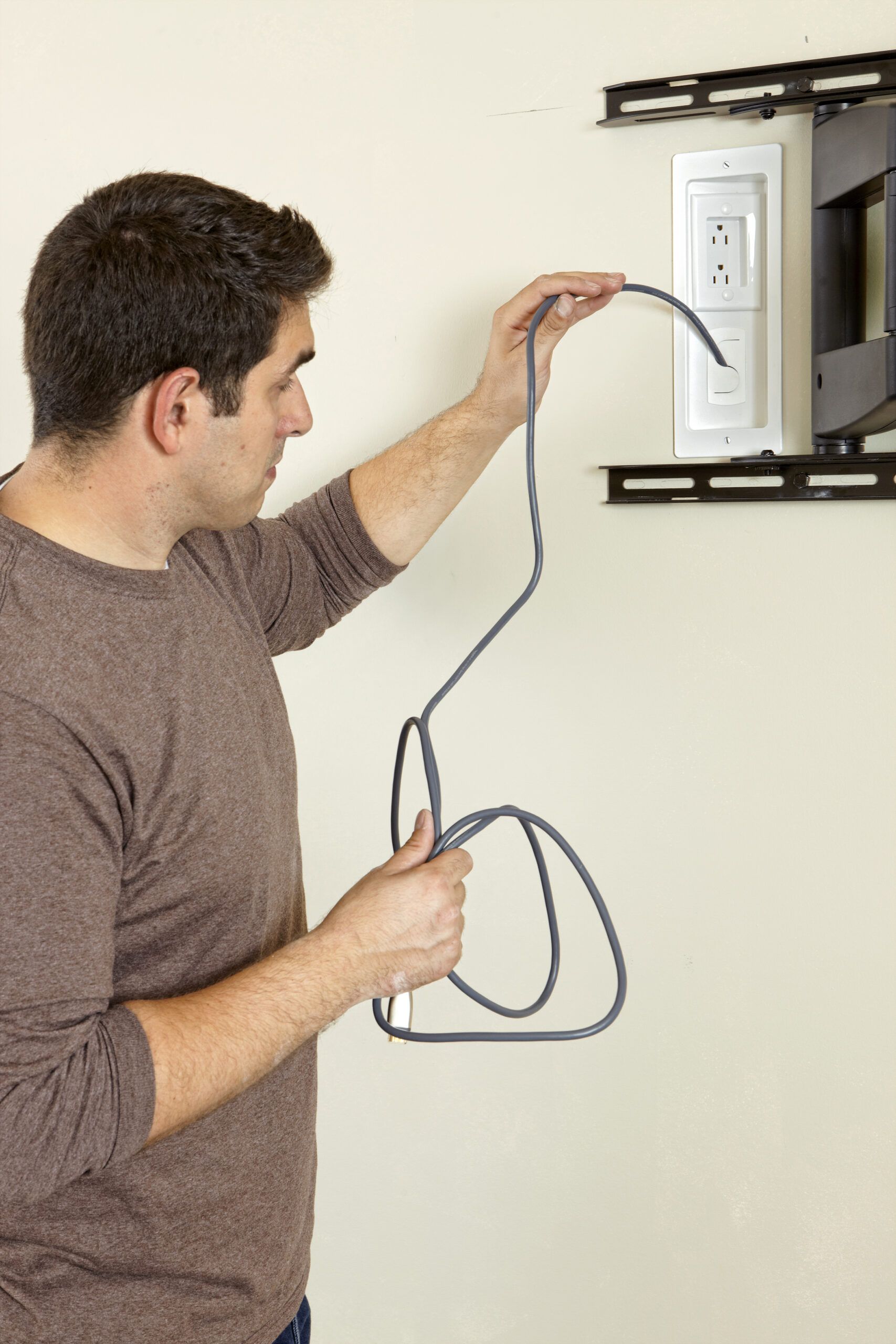
Lastly, fasten the unattached half of the mount to the back of the TV. Have someone help you lift the TV and hold it steady while you bolt the two halves together. Tighten the nuts with a socket wrench. Plug the TV’s power cord into the upper receptacle, then use the supplied extension cord to run power from an outlet to the bottom receptacle.
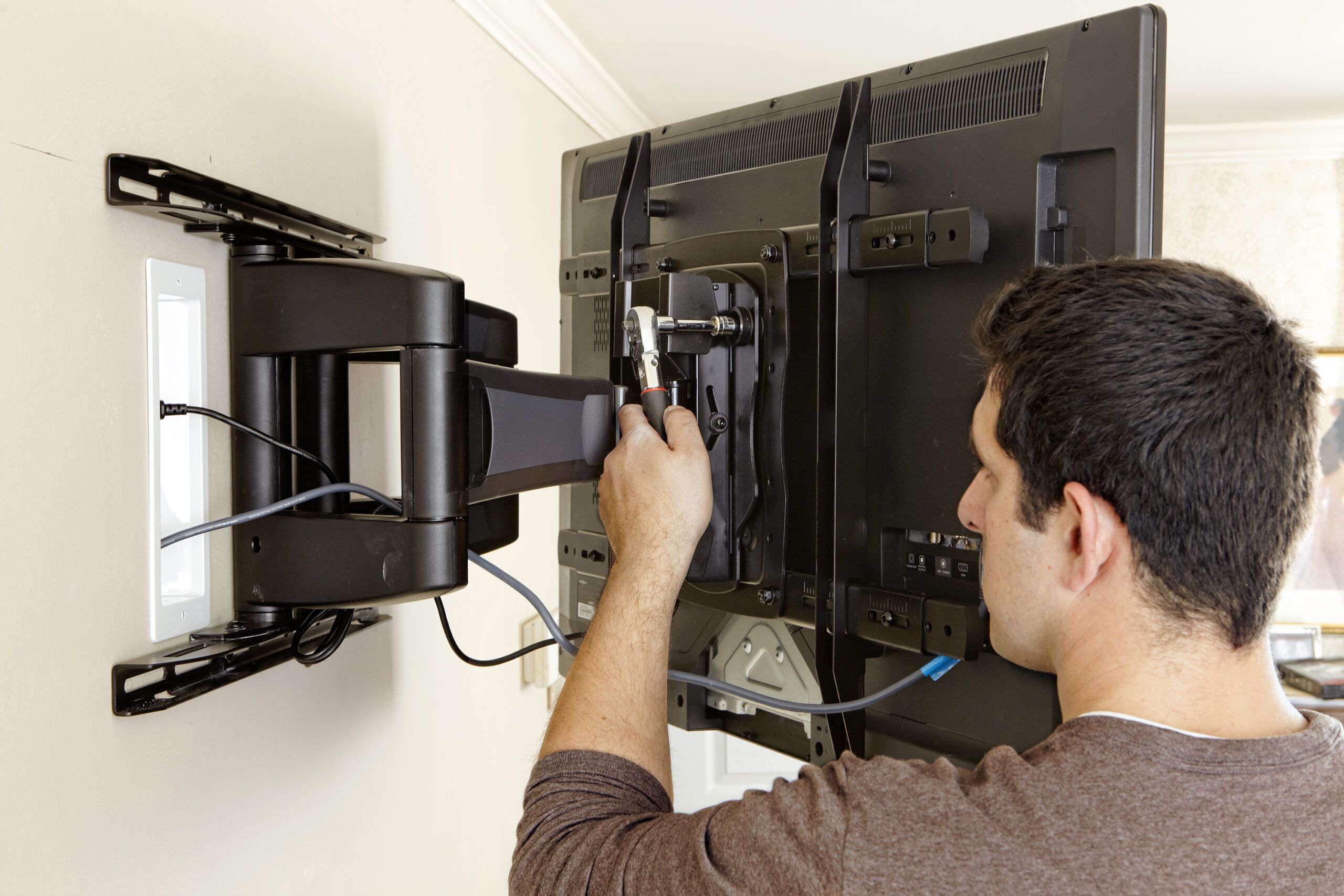
TV Cable Management Solutions
A clean cable setup completes the sleek look of a wall-mounted TV. There are several ways to manage these cords.
Using a PowerBridge System
A PowerBridge system is an excellent solution for hiding cables within your wall. Here’s how to install one:
- Choose locations for the upper and lower receptacle boxes.
- Cut holes in the drywall for both boxes using the provided template.
- Fish the power cord and A/V cables through the wall cavity.
- Connect the power cord to the receptacles and secure the boxes to the wall.
- Plug your TV and components into the upper receptacle.
Alternative TV Cable Concealment Methods
If you can’t or prefer not to use a PowerBridge system, consider these alternatives:
- Behind-furniture routing: Run cables behind entertainment centers or other furniture.
- Cable raceways: These plastic channels can be painted to match your wall and hide cables running down from the TV.
- Cord covers: Fabric sleeves will bundle and conceal multiple cables.
- In-wall cable management kits: This is similar to PowerBridge but without electrical components.
Mounting a TV Without Studs
While mounting to studs is ideal, it’s not always possible. If you must mount on drywall without studs, choose heavy-duty toggle bolts or molly bolts rated for your TV’s weight. Mark and drill holes for the anchors according to your mount’s instructions. Install the anchors and attach the wall plate. Be extra cautious and check the mount regularly for any signs of loosening.
Mounting a TV on Different Wall Types
Different wall types require different approaches to TV mounting. Let’s explore how to effectively mount your TV on common wall materials.
Drywall
Drywall is the most common wall material in homes. While it’s ideal to mount your TV to studs, sometimes you may need to use drywall anchors. Use heavy-duty anchors such as toggle bolts or molly bolts to support the TV’s weight. Follow the instructions to avoid damaging the wall.
Brick or Concrete
Mounting a TV on brick or concrete walls requires different hardware than drywall. Masonry anchors and screws are designed to hold the weight of the TV securely. Make sure to use a drill bit suitable for masonry and follow the manufacturer’s instructions for installing the anchors and screws. This method ensures a sturdy and secure mount.
Plaster Walls
Plaster walls can be more challenging than drywall due to their brittleness. You must find the studs behind the plaster to ensure a secure mount. Using a stud finder designed for thicker walls will help. Avoid using just drywall anchors, as they don’t hold well in plaster. Instead, use screws that can penetrate the plaster and grip the stud behind it.
TV Mounting Safety Considerations and Best Practices
Safety should be your top priority when mounting a TV. Always check the weight capacity of your chosen mount and factor in any additional weight from soundbars or other attached devices. Remember that larger TVs may require special mounts or additional support. When in doubt, choose a mount rated for a higher weight than your TV.
Troubleshooting Common TV Hanging Issues
Even with careful planning, you may encounter some challenges. Here’s how to address common problems.
Dealing with Uneven Walls
- Use a level to check if your wall is uneven.
- For slight unevenness, use washers or spacers behind the wall plate.
- For more significant issues, consider using a mount with built-in leveling adjustments.
- In extreme cases, you may need to install a mounting board to create a level surface.
Our Conclusion
Remember to prioritize safety, choose the right mount for your TV and room layout, and take your time to get each step right. We don’t recommend hanging a TV by yourself, especially a very heavy one. You’ll also need someone to help look behind the TV to make sure it aligns with the brackets. If you feel unsure about any steps, especially in regard to electrical wiring, don’t hesitate to call a qualified handyman.
